Ameya DalviJan 29, 2021 18:43:43 IST
Rating: 3.3/5
Price: Rs 2,499
After smartphones, audio and smart TV categories, fitness wearables seemed the most likely category for OnePlus to make a foray into next. So, the launch of a fitness product from the company did not come as a surprise. However, what did surprise me was the price band they chose to target. Typically, OnePlus is not a brand that plays in the entry-level segment, but that has changed with the launch of the new OnePlus Band. Does it do enough to make the user stand up and take notice? Let’s find out.

OnePlus Band. Image: Tech2/Ameya Dalvi
Unappealing design, but sturdy build and comfortable to wear
Though there are no rough edges on the OnePlus Band, there’s nothing appealing about the design either. It’s a simple fitness band after all. The detachable capsule is nicely rounded and fits well into the groove on the silicone strap. The two-tone black and grey strap I received isn’t one to attract any attention, but its tangerine gray variant may add a bit of flash to the product. Looks aside, the band is quite light (under 23 grams) and comfortable to wear throughout the day without any discomfort or skin irritation. You get SpO2 and heart rate sensors at the back, along with the charging pins.
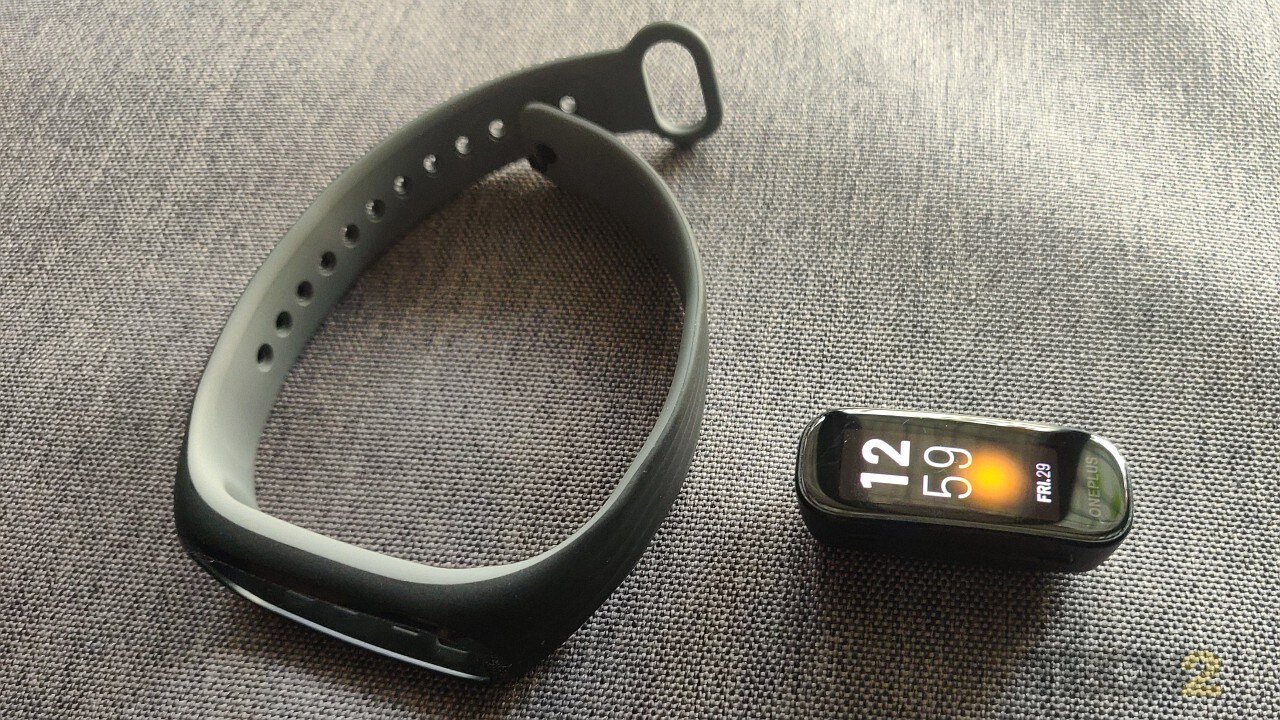
The detachable capsule is nicely rounded and fits well into the groove on the silicone strap. Image: Tech2/Ameya Dalvi
There are no physical buttons here, just the touchscreen display that lets you browse through the menus and access different functions of this device. The screen turns off automatically after a few seconds (or as per the duration you set). Or you can just cover it with your palm for a second to turn it off. The watch interface isn’t the most intuitive, but quite easy to use once you figure out how. More on that a little later. The OnePlus Band is IP68 rated dust and water resistant, and can withstand 5ATM pressure, so swimming with it is permissible.
Sharp and responsive display with limited watch faces
The OnePlus Band has an elongated 1.1-inch AMOLED display with a resolution of 126 x 294 pixels. There is no mention of scratch resistant glass or an oleophobic coating in the spec-sheet. But after two weeks of usage, there isn’t a single scratch on the screen, nor did I have to wipe it too often in that period to get rid of fingerprints or smudges. The screen has five levels of brightness, and is perfectly legible outdoors at 60 percent brightness that I set during the course of my testing.
You need to flick your wrist to turn the screen on, and that worked well. This feature gets auto-disabled at night or for the duration you choose from the app. You just need to tap the screen to wake it. The watch comes pre-loaded with five watch faces, and you are allowed to replace all five with those of your choice from the app. The watch face library for the OnePlus Band isn’t extensive yet. You do get a couple of dozen options at the moment, but they seem to be more of the same with different colours or backgrounds. Most only show time and date, and there’s only one type that shows the step counter, but the font size is too small. No other fitness data is available on any of the faces.
Not-so-smart user interface, half-baked companion app
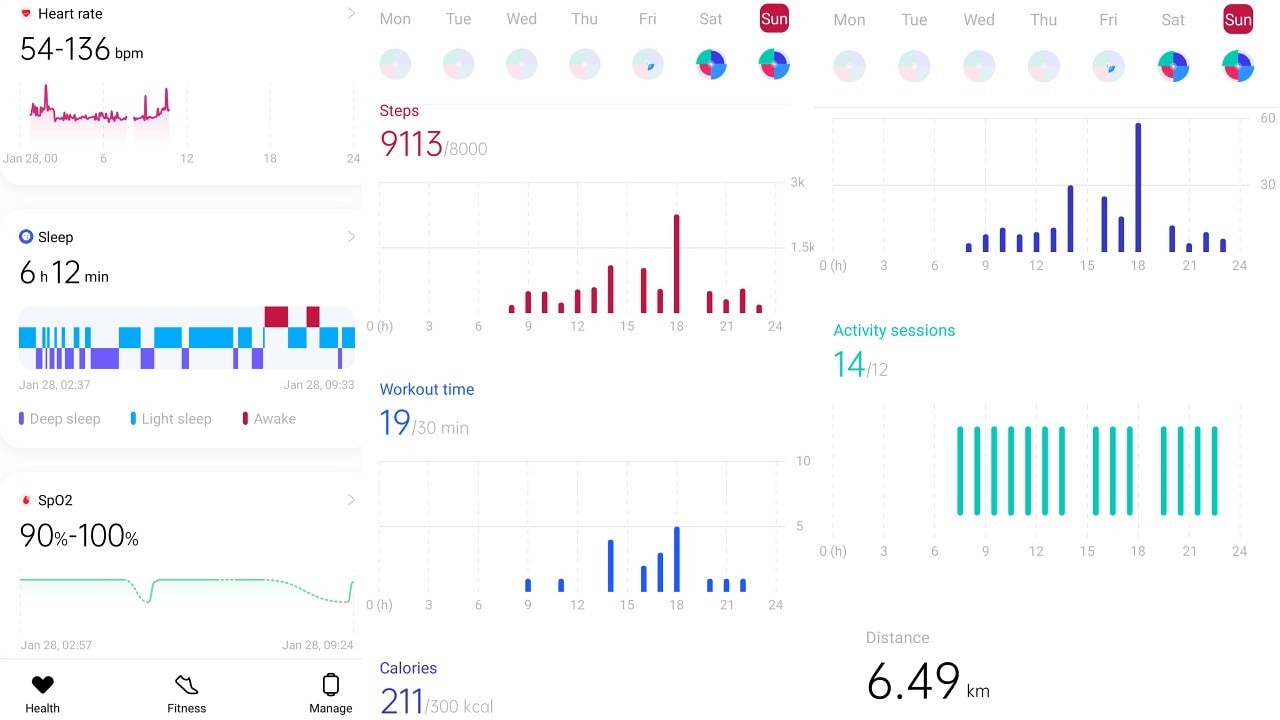
The OnePlus Health app that this band syncs with on Android phones (as of now) also seems like a work-in-progress.
The user interface of this band isn’t too complex to grasp, but doesn’t seem well thought out. Navigation is as simple as swiping from different sides of the screen to get to the desired option. Swipe down for notifications, swipe up for accessing different functions and workout modes; these are fine. Swipe left and right are wasted on cycling through the five watch faces. I cannot think of a reason why one would need to change the watch face that often. That could have easily been pushed down a layer or two deeper, and the side swipe utilised to display fitness goal progress, heart rate etc.
The OnePlus Health app that this band syncs with on Android phones (as of now) also seems like a work-in-progress. It displays very basic information, and certain watch settings and customisation options are either hidden deeper than necessary, or scattered across different tabs. It seems like the developers were working on a tight deadline to get it out. Given that OnePlus is expected to launch a few more fitness wearables this year, it wouldn’t be a bad idea for the company to give the app a long, hard look and make the necessary changes. Given their track record, I believe they will.
Average feature set, variable performance
Before you start using this fitness band, you need to install the OnePlus Health app on your Android phone, create a profile and sync the band with it over Bluetooth. Irony of ironies, the OnePlus Band refused to sync with its companion app on my OnePlus phone running Android 10, even after several attempts and reinstalls. However, it worked instantly with an older phone from a different brand. I still don’t know what the issue was, but it was probably an isolated case.
The OnePlus Band has two main sensors at the back — an optical heart rate sensor and a blood oxygen sensor, and both work very well. Most of the fitness tracking is based on these two, and the hardware seems quite good. The SpO2 sensor provides fairly accurate readings that are on par with a basic over-the-counter oximeter, but not as quick. Like in case of most budget fitness watches, you need to keep your hand steady for about 30 seconds to get accurate readings. Of course, this is meant to serve as a broad guideline, and not replace clinical instruments.
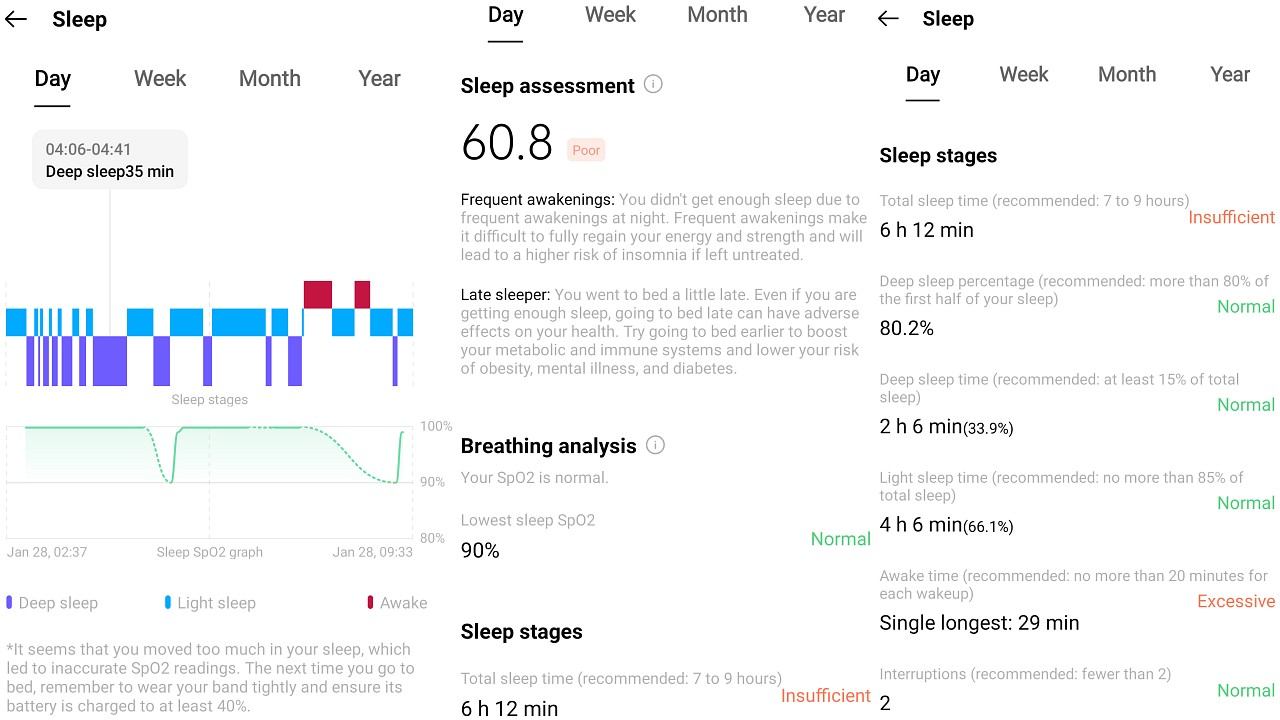
Sleep tracking seems fairly accurate, especially the duration of the sleep.
The use of the SpO2 sensor extends beyond these basic on-demand readings. It can also be used to track blood oxygen saturation while you are asleep. The test frequency can be set to 2 or 6 minutes, depending on the level of accuracy you desire and the amount of battery you are willing to sacrifice. But there’s a catch — the readings are accurate only if you happen to be steady during tracking. If you are shifty in bed, this won’t work for you. Sleep tracking seems fairly accurate, especially the duration of the sleep. However, there is no REM indicator, just light/deep sleep and awake time. While I cannot comment on light and deep sleep numbers for obvious reasons, the awake time seems way too high, and is probably the sum of the time I was actually awake and REM. A bifurcation would be nice going ahead.
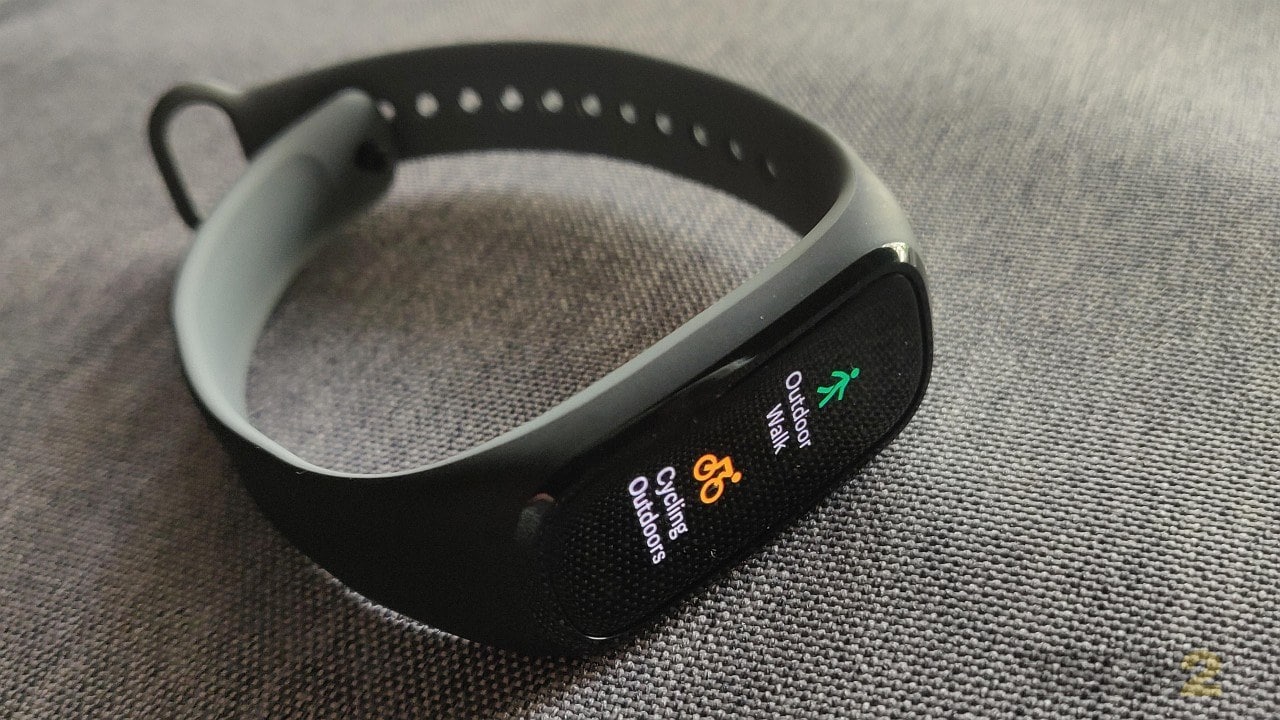
Most fitness modes have an indoor tracking option too, given that this band doesn’t have built-in GPS. Image: Tech2/Ameya Dalvi
This band offers about a dozen workout modes that cover most common fitness activities like walking, running, cycling, swimming and more. There are cricket, badminton and yoga modes too. The watch is 5ATM water resistant and can be worn during a swim without a worry. Most fitness modes have an indoor tracking option too, given that this band doesn’t have built-in GPS (none of the bands in this budget do). When outdoors, one can use the assisted GPS option, that basically uses the GPS on your phone to track the distance covered. However, the accuracy is iffy, and an update or two away from being reliable.
The assisted GPS option often under-reports the distance covered, just like the steps counter. Though not drastic, there is a 5 to 7 percent variance from the actual steps walked. The good part is it does not report false steps. There was an instance where I was out for a drive with a couple of friends who were also wearing budget fitness watches, and their trackers reported a few thousand extra steps, but not the OnePlus Band. A pat on the back for that.
The band also provides you with an assisted breathing mode, which is worth a try from time to time. Strangely, there is no stress measurement option here despite having a capable heart rate sensor. Also missing is the menstrual cycle tracking functionality for ladies that most fitness wearables offer these days. Beyond fitness, the watch can receive notifications from the phone for almost any app that you choose. However, you really need to strain your eyes to read most of them on the band’s tiny screen, and you cannot reply either. Best to choose a bare minimum of notifications and prolong battery life.
Decent battery life
Before we get to the battery life, a quick word on the charging mechanism of the OnePlus Band. Instead of a magnetic clip-on charger, the company has opted for a mechanism that requires a lot more force. One needs to remove the capsule from the strap and push it hard into the charging cradle till it clicks in place. Removing it from the dock also requires a considerable amount of force. While nothing broke when I charged it a couple of times during testing, it is a source of unnecessary stress.
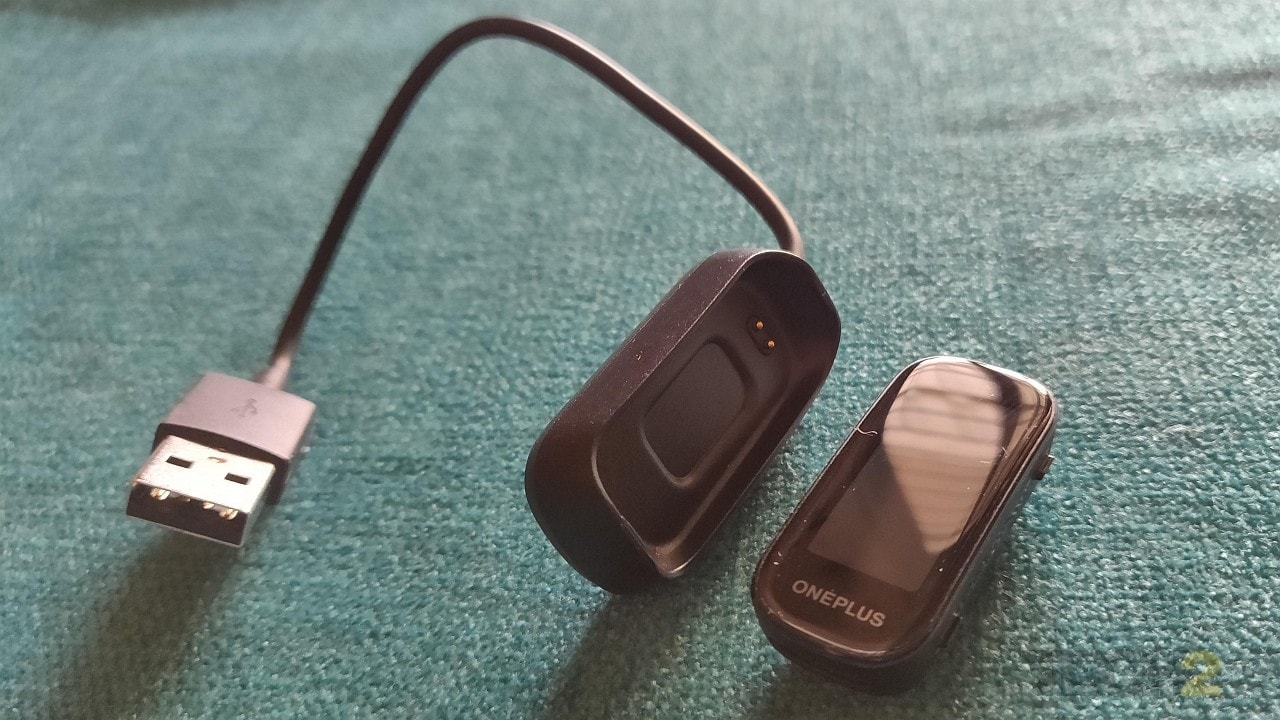
Instead of a magnetic clip-on charger, the company has opted for a mechanism that requires a lot more force. Image: Tech2/Ameya Dalvi
The company claims a battery life of 14 days for the band on a full charge ‘under test conditions’. In reality, you get anything between a week to ten days depending on the degree and frequency of monitoring, screen-on time, quantum of notifications and activity. For instance, heart rate monitoring frequency can be set to 2 minutes or 6 minutes; the former will drain the battery faster. Similarly, frequency of monitoring of blood oxygen saturation during sleep also impacts battery life. I managed to get close to 10 days out of the band with one-hour daily workout, heart rate frequency set to 2 minutes, sleep tracking 4 times during that period and twice with blood oxygen saturation monitoring on. Notifications were limited to SMS and email.
Price and verdict
The OnePlus Band sells for Rs 2,499 in India with a one year warranty. While the price is fair, this band doesn’t offer anything new in the segment that we haven’t already seen before. Nor does it bundle everything that competing products offer. The barebone companion app doesn’t do it any favours either. On the brigh side, the battery life is decent, the SpO2 and heart rate sensors are quite accurate, and it doesn’t add false steps. But there’s only as much one can do on a screen that small, which brings me to my next point.
The price of fitness watches with similar or more features and larger screens are falling rapidly. They already breached the Rs 5,000 barrier months ago. The likes of Amazfit’s BIP series (including the impressive Amazfit BIP U that we reviewed recently) that starts just a thousand Rupees or so higher than the OnePlus Band, will pose a bigger challenge to this product, in addition to other fitness bands like the Mi Band 5. I continue to wonder whether OnePlus really needed to dip their toes in this price segment.
Post a Comment